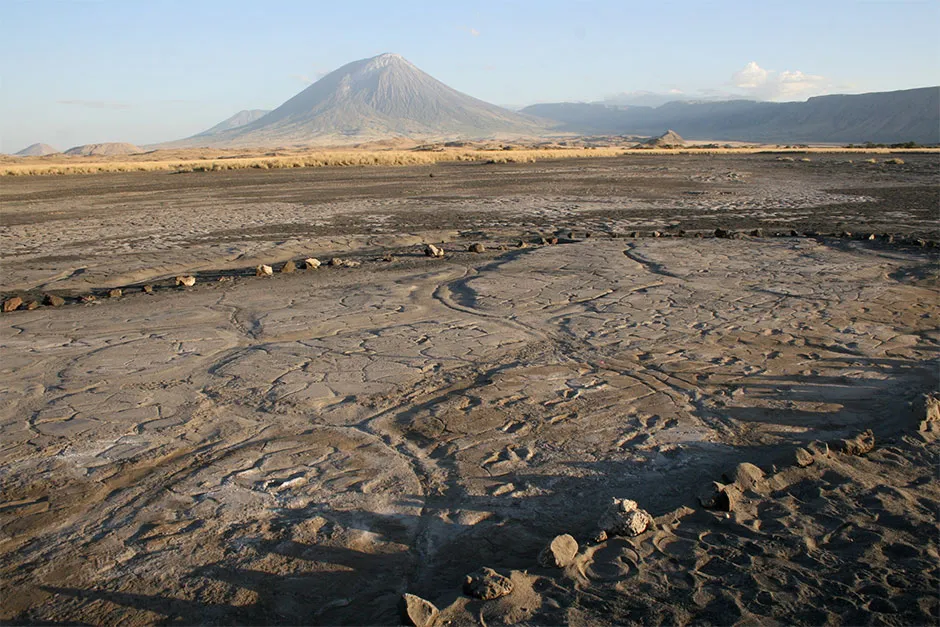A collection of more than 400 fossilised footprints discovered in Tanzania suggest sex-based division of labour may have existed in human communities around 19,000 years ago, according to researchers.
The large set of well-preserved foot impressions were uncovered in Engare Sero, which lies just south of Lake Natron in northern Tanzania.The footprints are thought to have been left in the mud between 5,700 and 19,100 years ago, during the Late Pleistocene period.
The study, published in the journal Scientific Reports, was led by Kevin Hatala, a paleoanthropologist at Chatham University in Pittsburgh, US.Prof Hatala and his team say their findings provide a “tantalising snapshot” of humankind’s earliest days.
Read more about ancient humans:
- Ancient humans arrived in Europe 'far earlier than previously thought'
- Ancient human regularly climbed through the trees
The Engare Sero site, which houses 408 human footprints, was discovered by members of a Maasai community living nearby.
The researchers believe 17 tracks of footprints were created by a group of people – made up of 14 adult females, two adult males and one young male – walking in a southwesterly direction.
Their theory is based on various calculations taking into account the size and orientation of the footprints as well as the distances between them.

The authors speculate the females were foraging together and were either visited or accompanied by the males.Their behaviour shows similarities with modern-day hunter-gatherers such as the Ache and Hadza, the researchers added.
The team wrote: “In the context of modern ethnographic data, we suggest that these trackways may capture a unique snapshot of cooperative and sexually divided foraging behaviour in Late Pleistocene humans.”
Meanwhile, six other tracks of footprints with northeasterly orientations showed a much wider variety of speed estimates, the researchers said, suggesting they were not created by a single group but by various individuals running and walking.
The study authors said: “The Engare Sero footprint assemblage provides a tantalising snapshot of the movements of a group of modern humans living in East Africa in the Late Pleistocene.
“These trace fossils offer windows into anatomy, locomotion, and group behaviour, which help to supplement what is known from other forms of fossil and archaeological data.
“They provide evidence of body sizes from a region and area where skeletal fossil data are scarce, and they preserve direct evidence of both walking and running behaviours.”
They added: “Such insights cannot be gleaned from most other forms of fossil data.”
Reader Q&A: How did cavemen cut their toenails?
Asked by: Edward Seymour, Hove
They could theoretically have used a flint edge to trim them, or a rough stone to file them down. However, we don’t have any firm evidence of ‘cavemanicure’ at all, since no fingernails or toenails survive from any Stone Age burial sites.
If you spend your day walking barefoot and scraping up roots with your hands, your nails will wear down naturally, which is why they have evolved to keep growing throughout our lives.
Read more: